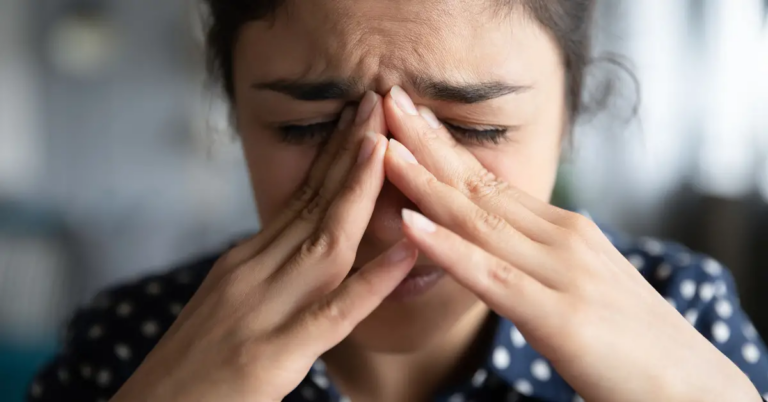Have you ever caught a whiff of a scent that immediately reminded you of an elderly relative’s home? This scent, often termed “old person smell,” transcends being a mere social stereotype to stand as a scientifically recognized phenomenon. While some might dismiss it as a baseless or even derogatory notion, research in the scientific community has begun to unravel the truth behind it, proving that the phenomenon of “old person smell” is real and far more fascinating than we might have initially believed.
In Japan, people know this unique scent as “kareishu,” highlighting not just a widespread recognition but also a cultural acknowledgment of its presence among the elderly. This acknowledgment brings to light the universal nature of old person smell, offering a blend of curiosity and respect towards the aging process. It turns out that our noses might be picking up on more than just the passage of time; they may be detecting a complex story written in the very essence of our being.
As we delve deeper into the science behind this phenomenon, we invite readers to keep an open mind. Old person smell is not merely a quirky topic of conversation but a doorway to understanding the intricate ways our bodies change and communicate with the world around us as we age. Let’s explore what makes this scent so unique and why it captures the attention of scientists and cultures alike.
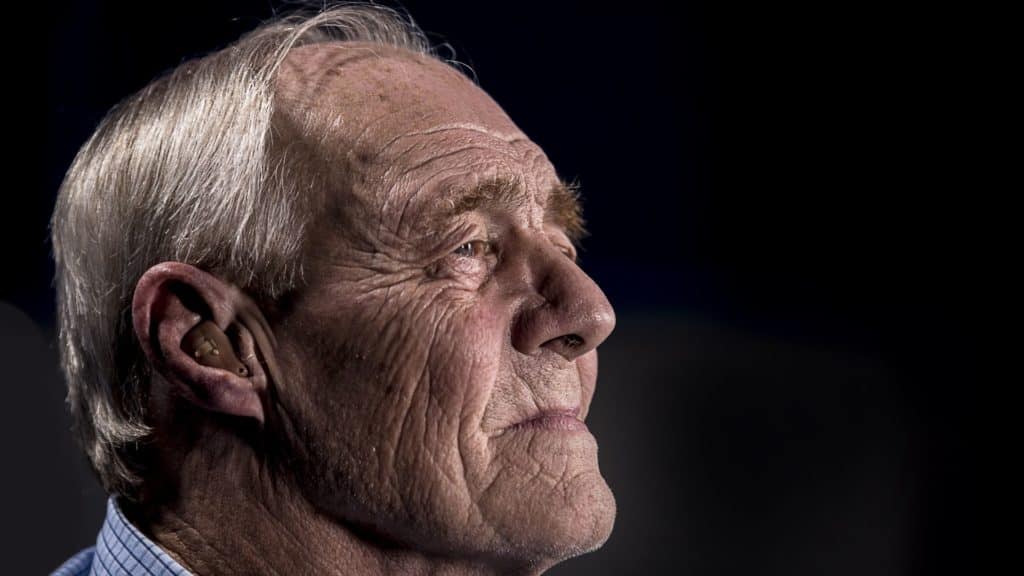
Is Old Person Smell Real? Understanding the Truth Behind It
At the heart of understanding “old person smell” lies a groundbreaking study that has turned heads within the scientific community and beyond. This research brought to light an intriguing truth: humans, like other animals, can identify the age of individuals based solely on body odor. This revelation confirms that old person smell is real and underscores our olfactory system’s remarkable sensitivity and complexity. [1]
A Deep Dive Into the Experiment’s Methodology
How was this fascinating discovery made? The study’s approach was as innovative as its findings. Participants from various age groups were asked to wear T-shirts equipped with underarm pads while they slept for five consecutive nights. The objective was clear yet challenging: to capture the essence of body odor for scientific analysis without contamination from external scents or influences.
After the collection phase, the sweat-soaked pads were carefully cut from the T-shirts and sealed in jars, each serving as a vessel of olfactory information about the wearer’s age. The next phase of the experiment involved a group of young adults, aged between 20 and 30, who played a critical role as the ‘sniffers.’ Their task? To assess the pleasantness of each scent and guess the age range of the individuals behind the odors.
This unique methodology provided a solid foundation for the study, enabling researchers to explore the nuances of human body odor and its changes with age in a controlled, scientific manner. The insights gained from this experiment have significantly advanced our understanding of old person smell, shedding light on the biological and chemical shifts that accompany aging.


Unveiling the Results: Perception and Reality
The aforementioned study’s findings did more than verify the existence of old person smell; they shattered a widely held belief. Contrary to the common perception that associates the scent with unpleasantness, the younger volunteers in the study found the underarm odor of the elderly to be rather neutral, and in some cases, not unpleasant at all.
This discovery challenges the stigma surrounding aging and its associated smells, suggesting that our predispositions about old person smell may be more cultural or societal than based on actual sensory experience.
The Complexity of Body Odors
The study also highlighted an essential distinction in the realm of body odors: not all smells are created equal. The underarm odor, which was the focus of this experiment, carries different characteristics and perceptions compared to odors emanating from other parts of the body, such as the skin or breath. This differentiation is crucial for a comprehensive understanding of old person smell and underscores the complexity of human body odors.
These nuances point to a broader spectrum of bodily changes with age, suggesting that the smell might involve a mix of various odors, each with its unique chemical makeup and impact on human perception. The study’s results invite us to reconsider our assumptions about aging and smell, encouraging a more nuanced and empathetic approach to how we perceive the elderly in our society. It’s a reminder that the scents we emit are as diverse and intricate as the lives we lead, with old person smell serving as just one note in the rich symphony of human existence.
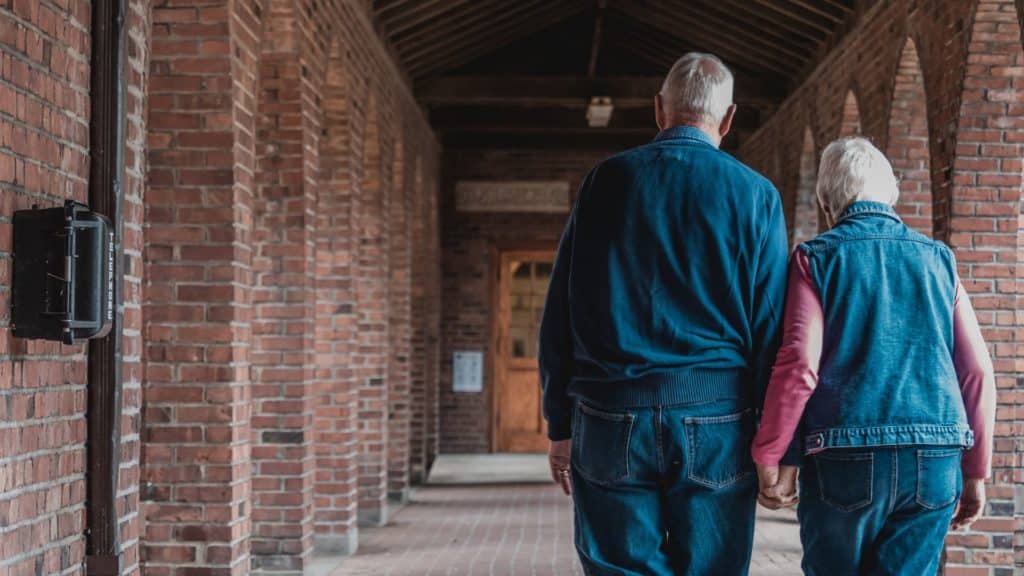
The Chemistry of Aging
As we delve deeper into the essence of old person smell, it becomes evident that the phenomenon is rooted in the chemistry of aging. Among the various compounds identified, one stands out for its significant role: 2-Nonenal.
2-Nonenal: The Signature Scent of Aging
- What is 2-Nonenal? This compound is an unsaturated aldehyde with a distinct odor, often described as greasy and grassy. It’s not commonly found in younger individuals but tends to appear as we age.
- How does it link to aging? 2-Nonenal is produced when the skin’s natural oils—rich in omega-7 unsaturated fatty acids—begin to oxidize. As the skin ages, it becomes more prone to this oxidation process, leading to higher levels of 2-Nonenal. [2]
Factors Contributing to the Change in Body Odor with Age
The transition in body odor as we grow older is not solely due to the emergence of 2-Nonenal. Several factors contribute to this olfactory evolution:
- Changes in Skin Composition: As we age, our skin undergoes significant changes, including variations in moisture levels, lipid content, and protein structure. These alterations can influence the skin’s microbiome and, consequently, the scent it produces.
- Hormonal Shifts: Hormonal changes, a hallmark of aging, also play a critical role in modifying body odor. They can alter the body’s sweat composition, leading to new, sometimes more potent, odors.
- Diet and Health: What we eat and our overall health status can impact our body’s scent. Certain medical conditions and medications common in older age can further modify personal aroma.
- Hygiene and Lifestyle: Although not exclusive to aging, shifts in hygiene practices and lifestyle choices over the years can influence the nature and intensity of body odor.
- Environmental Factors: The cumulative exposure to various environmental factors, including pollutants and toxins, can subtly alter the body’s chemistry and, by extension, its odor.
Understanding the chemistry of aging and its impact on body odor provides valuable insights into the natural processes of the human body. It reminds us that “old person smell” is not a marker of neglect or uncleanliness but a natural part of the body’s evolution as we journey through life. This knowledge encourages a more compassionate and informed perspective on aging, urging us to embrace these changes with grace and understanding.
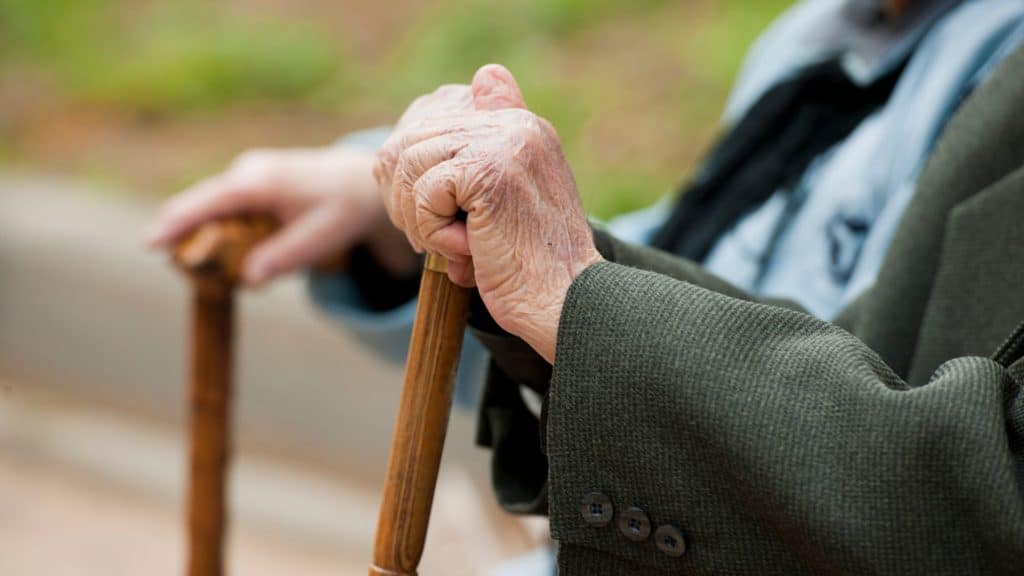

An Evolutionary Explanation
The ability to distinguish age and health through body odor is not a trivial aspect of human experience; it’s believed to serve significant evolutionary purposes. Understanding these olfactory signals can offer critical insights into the social and reproductive dynamics of not only humans but also many species in the animal kingdom.
The Evolutionary Significance of Scent
- Identifying Age and Vitality: In the wild, the ability to discern the age of potential partners is crucial. Older individuals may carry genetic traits that have contributed to their longevity, making them attractive mates. The scent associated with age can signal experience, stability, and genetic fitness.
- Health Assessment: Body odor can also serve as an indicator of health. Diseases and infections often alter an individual’s scent, enabling others to avoid sick individuals and reduce the risk of contagion. This mechanism supports the survival of the group by encouraging healthy interactions. [3]
Examples from the Animal Kingdom
- Elephants: Research has shown that elephants can differentiate between the scents of various age groups within their species. This ability aids in the selection of mates and the formation of social hierarchies. [4]
- Fruit Flies: In the world of fruit flies, females show a preference for older males over younger ones, presumably because age signals a higher chance of survival and genetic fitness. The scent of older males plays a critical role in this selection process. [5]
- Dogs: Dogs are well-known for their ability to use scent to gather information about age, health, and even the emotional state of other dogs and humans. This keen sense of smell enhances their social interactions and bonding with humans. [6]
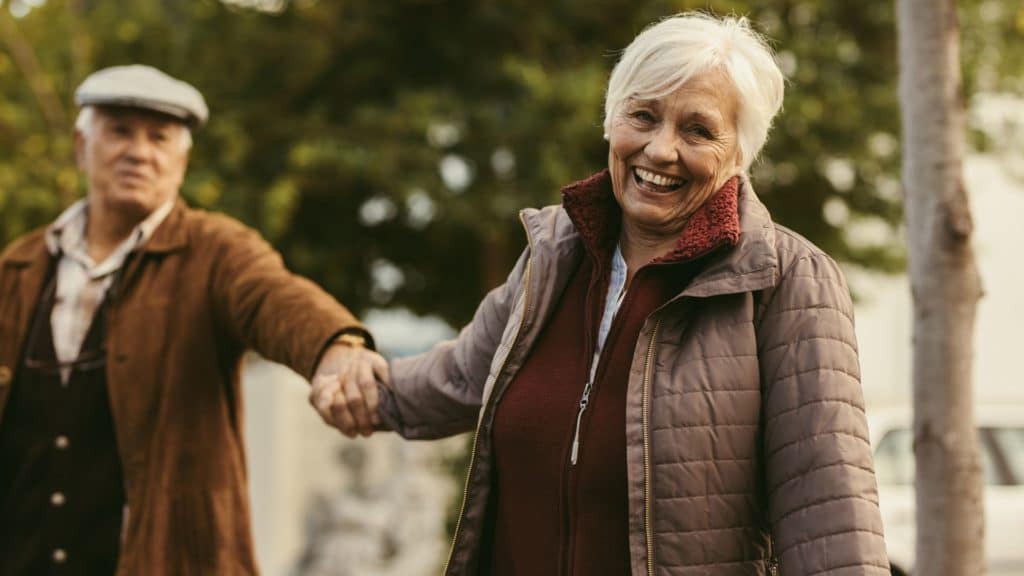
Implications for Human Evolution
The parallels between humans and other species suggest that our sensitivity to the smell of old people and other body odors has deep evolutionary roots. This sensitivity likely played a role in ancient human societies for mate selection, social cohesion, and disease avoidance. By being able to detect subtle changes in body odor, our ancestors could make informed decisions that would increase their chances of survival and reproductive success.
Understanding the evolutionary basis for our perception of body odor enriches our appreciation for the complexity of human biology and behavior. It underscores the interconnectedness of our sensory experiences with the natural world and highlights the sophisticated ways in which humans, like other animals, navigate their environments and relationships.
Beyond the Scent: Broader Implications
The phenomenon, far from being a mere curiosity, has profound implications for social interactions, personal relationships, and healthcare. By deepening our understanding of this scent and its origins, we can foster a more empathetic and inclusive society, particularly towards the elderly.
Social Interactions and Personal Relationships
- Breaking Down Stereotypes: Recognizing the scientific basis behind old person smell helps dispel negative stereotypes and stigmas associated with aging. This understanding can promote more positive social interactions, reducing ageism and fostering respect across generations.
- Enhancing Connection: Awareness of the natural changes in body odor with age can encourage families and friends to maintain closer relationships with elderly loved ones. Understanding these changes as a normal part of aging can reduce discomfort and foster stronger bonds.

Implications for Healthcare
- Improved Care for the Elderly: In healthcare settings, recognizing the natural shifts in body odor can lead to more compassionate care. Caregivers and medical professionals who understand these changes can better address the hygiene and health needs of elderly patients, improving their quality of life.
- Diagnostic Tools: The research into body odor and aging also opens up the possibility of developing diagnostic tools. By identifying specific odor markers, medical professionals could potentially detect early signs of diseases more readily, enabling prompt intervention.
Fostering Empathy and Understanding
Understanding the nature of old person smell is a crucial step towards cultivating empathy for the elderly. It reminds us that aging is a universal journey marked by profound physical and chemical changes, many of which are beyond our control. By approaching these changes with kindness and understanding, we can create a more supportive environment for our elderly population.
- Educational Opportunities: Incorporating information about the chemistry of aging and body odor into educational materials can help demystify the aging process. This knowledge can prepare younger generations for their own aging journey and promote a more age-inclusive perspective from an early age.
- Cultural Shifts: As society becomes more informed about the realities of aging, we can expect a cultural shift towards greater acceptance and appreciation of the elderly. Recognizing the value and wisdom that come with age can strengthen the social fabric, benefiting everyone.
Old person smell is more than a peculiar aspect of human biology; it’s a gateway to understanding the complex interplay between aging, health, and society. By embracing this knowledge, we can move towards a future where every stage of life is met with dignity, respect, and empathy.
A Journey of Understanding
As we conclude our exploration into the phenomenon, it’s clear that this topic is much more than a quirky facet of human aging. Through the lenses of scientific curiosity and human compassion, we’ve uncovered a complex interplay of biological, chemical, and societal factors that shape our perceptions and interactions across the lifespan.
- Scientific Basis: Old person smell is real, grounded in the chemistry of aging, particularly due to compounds like 2-Nonenal. This understanding challenges stereotypes and invites a more nuanced view of aging.
- Cultural and Social Implications: The phenomenon affects social interactions and personal relationships, offering a chance to break down age-related stigmas and foster stronger connections with the elderly.
- Evolutionary Perspective: Our ability to perceive age through scent has deep evolutionary roots, serving functions that go beyond mere social preference, touching on aspects of survival and mate selection.
- Healthcare and Empathy: Recognizing changes in body odor as a natural part of aging can improve care for the elderly, promoting empathy and respect in healthcare settings and beyond.
This journey through the science and implications of old person smell does more than expand our knowledge; it invites us to reflect on the deeper themes of life itself. It reminds us of the complexity of human existence, intertwined with the continuous passage of time. By embracing these insights, we can approach aging with a more informed and compassionate perspective, appreciating its beauty and wisdom.

My Personal RX on Body Odor and Personal Hygiene
As a doctor deeply invested in promoting a healthy lifestyle and inspiring stories of aging gracefully, I understand that changes in body odor can be a sensitive topic. However, it’s a natural part of aging, and there are proactive steps you can take to manage it.
Here’s my personal prescription — a blend of science-backed advice and holistic wellness tips to help you navigate these changes with confidence and health.
1. Prioritize Hygiene: Regular bathing with mild, moisturizing soaps can help remove bacteria and dead skin cells that contribute to body odor.
2. Stay Hydrated: Drinking plenty of water helps flush out toxins that can exacerbate body odor.
3. Wear Natural Fibers: Clothes made from cotton, wool, or silk allow your skin to breathe, reducing sweat and odor.
4. Dietary Adjustments: What you eat impacts your scent. Reducing onion, garlic, and spicy foods can mitigate strong odors.
5. Regular Exercise: Moderate, regular exercise can help regulate the body’s metabolic processes, including those that affect body odor.
6. Mind Your Gut Health: A balanced diet rich in fiber and probiotics supports a healthy gut microbiome, which can positively influence your body’s scent.
7. OsteoProtect Integration: Incorporating my OsteoProtect into your daily regimen can support healthy bone density and skeletal strength. As our bodies age, maintaining strong bones is critical for preventing fractures and plays a role in overall health and well-being, potentially influencing body odor.
8. Embrace Antioxidants: Foods high in antioxidants can combat oxidative stress and possibly reduce the intensity of age-related body odor.
9. Stress Management: Stress can affect your body’s odors. Practices like yoga, meditation, and regular relaxation can have a positive effect.
10. Protocol e-book: Following a comprehensive guide like my 50-page comprehensive Protocol can empower you with knowledge on holistic health approaches. Addressing body odor changes with age holistically can improve not just your scent but your overall quality of life.
Remember, aging is a natural process, and each stage of life brings its own beauty and challenges. Making informed choices to embrace these changes can enhance your journey, making it as fulfilling and healthy as possible.
Sources:
- Mitro, S. D., Gordon, A. R., Olsson, M. J. R., & Lundström, J. N. (2012). The Smell of Age: Perception and discrimination of body odors of different ages. PLOS ONE, 7(5), e38110. https://doi.org/10.1371/journal.pone.0038110
- Haze, S., Gozu, Y., Nakamura, S., Kohno, Y., Sawano, K., Ohta, H., & Yamazaki, K. (2001). 2-Nonenal Newly Found in Human Body Odor Tends to Increase with Aging. Journal of Investigative Dermatology, 116(4), 520–524. https://doi.org/10.1046/j.0022-202x.2001.01287.x
- What your body odor says about your health. (n.d.). WebMD. https://www.webmd.com/skin-problems-and-treatments/ss/slideshow-what-your-body-odor-says-about-your-health
- LaDue, C. A., & Snyder, R. J. (2023). Asian elephants distinguish sexual status and identity of unfamiliar elephants using urinary odours. Biology Letters, 19(12). https://doi.org/10.1098/rsbl.2023.0491
- Dweck, H. K., Ebrahim, S. a. M., Retzke, T., Grabe, V., Weißflog, J., Svatoš, A., Hansson, B. S., & Knaden, M. (2018). The Olfactory Logic behind Fruit Odor Preferences in Larval and Adult Drosophila. Cell Reports, 23(8), 2524–2531. https://doi.org/10.1016/j.celrep.2018.04.085
- Kokocińska-Kusiak, A., Woszczyło, M., Zybala, M., Maciocha, J., Barłowska, K., & Dzięcioł, M. (2021). Canine Olfaction: Physiology, Behavior, and Possibilities for Practical Applications. Animals : an open access journal from MDPI, 11(8), 2463. https://doi.org/10.3390/ani11082463









